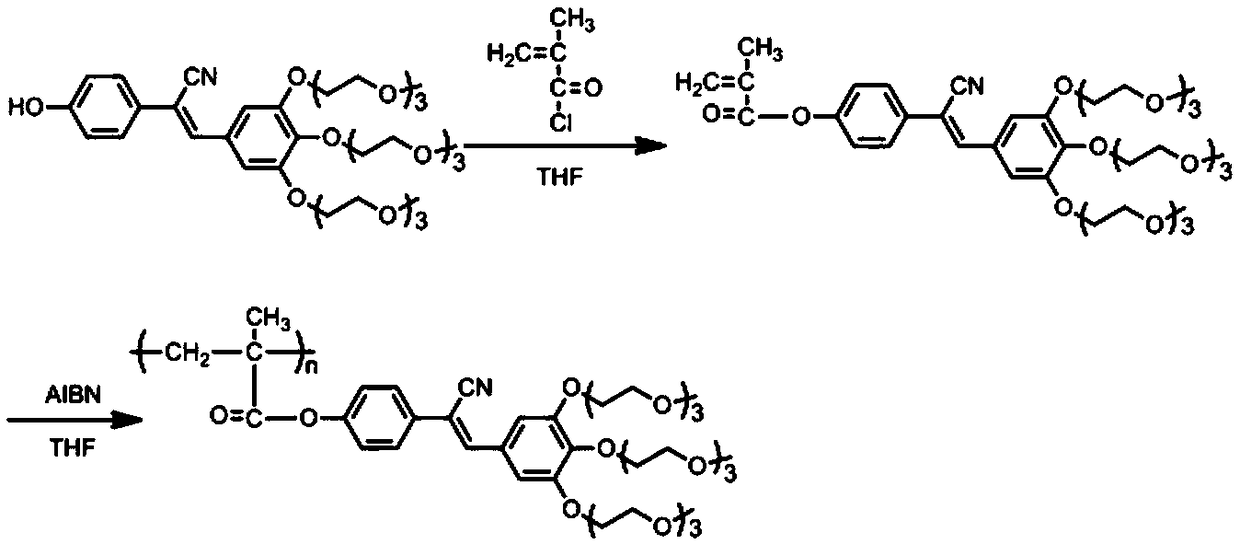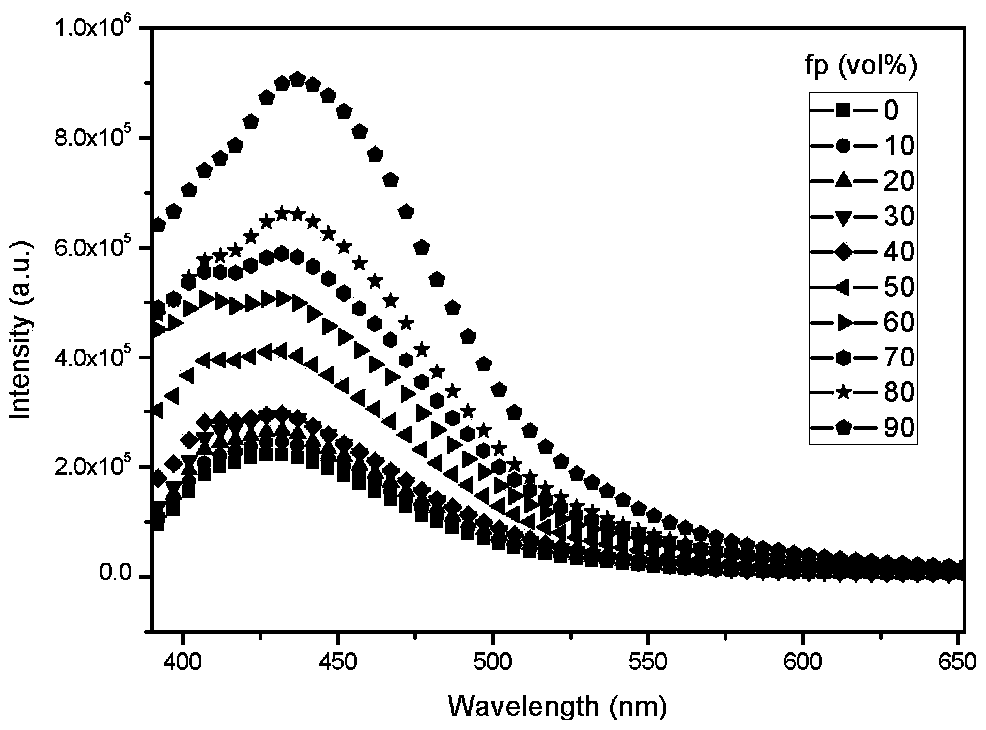AIEE side-chain polymer light emitting material with multiple stimulation responsiveness as well as preparation method and application of AIEE side-chain polymer light emitting material
A technology of multiple stimuli and luminescent materials, applied in the direction of luminescent materials, chemical instruments and methods, etc., can solve the problems of single stimulus responsiveness and low response to multiple stimuli
- Summary
- Abstract
- Description
- Claims
- Application Information
AI Technical Summary
Problems solved by technology
Method used
Image
Examples
Embodiment 1
[0045] 1. (Z)-4-(1-cyano-2-(3,4,5-tri(2-(2-(2-methoxyethoxy)ethoxy)ethoxy)phenyl ) Vinyl) the preparation of phenoxy methyl methacrylate
[0046] Add (Z)-2-(4-hydroxyphenyl)-3-(3,4,5-tris(2-(2-(2-methoxyethoxy)ethoxy) into a 250mL single-necked bottle )ethoxy)phenyl)acrylonitrile (6.0g, 8.48mmol), refined triethylamine (1.29g, 12.75mmol) and 80mL of refined THF. A tetrahydrofuran solution of methacryloyl chloride (1.06 g, 10.14 mmol) was slowly added dropwise with stirring at room temperature. After the dropwise addition, the reaction solution was continued to react for 1 h at room temperature. Spot plate tracking, after the reaction is completed, filter to remove the hydrochloride of triethylamine, then extract the organic phase with water and dichloromethane, collect the organic phase, dry and rotary evaporate to obtain a light yellow liquid product. The yield was 95%.
[0047] 2. Preparation of asexual spacer polymer P1
[0048] In a 20mm×200mm (width×length) clean gla...
Embodiment 2
[0051] 1, the synthesis of polymer P1 is the same as in Example 1
[0052] 2. Dissolve the polymer P1 in water to form an aqueous solution with a concentration of 1.0mg / mL, 2.5mg / mL, 5.0mg / mL, 7.5mg / mL, and 10.0mg / mL. Polymer aqueous solutions with different concentrations are temperature-sensitive The polymer is soluble in water at low temperature, and the light transmittance of the solution is high, while at high temperature, the polymer and water undergo phase separation, and the light transmittance of the solution decreases. The LCST value of the polymer decreased with the increase of the polymer concentration.
Embodiment 3
[0054] 1, the synthesis of polymer P1 is the same as in Example 1
[0055] 2. Dissolve polymer P1 in water to make an aqueous solution with a concentration of 5.0 mg / mL. As the temperature increases, the luminous intensity of the polymer aqueous solution remains basically unchanged at first, then increases sharply, and then decreases again. The fluorescence of the polymer aqueous solution Temperature sensitivity makes it useful as a temperature detector.
PUM
 Login to View More
Login to View More Abstract
Description
Claims
Application Information
 Login to View More
Login to View More - R&D
- Intellectual Property
- Life Sciences
- Materials
- Tech Scout
- Unparalleled Data Quality
- Higher Quality Content
- 60% Fewer Hallucinations
Browse by: Latest US Patents, China's latest patents, Technical Efficacy Thesaurus, Application Domain, Technology Topic, Popular Technical Reports.
© 2025 PatSnap. All rights reserved.Legal|Privacy policy|Modern Slavery Act Transparency Statement|Sitemap|About US| Contact US: help@patsnap.com



